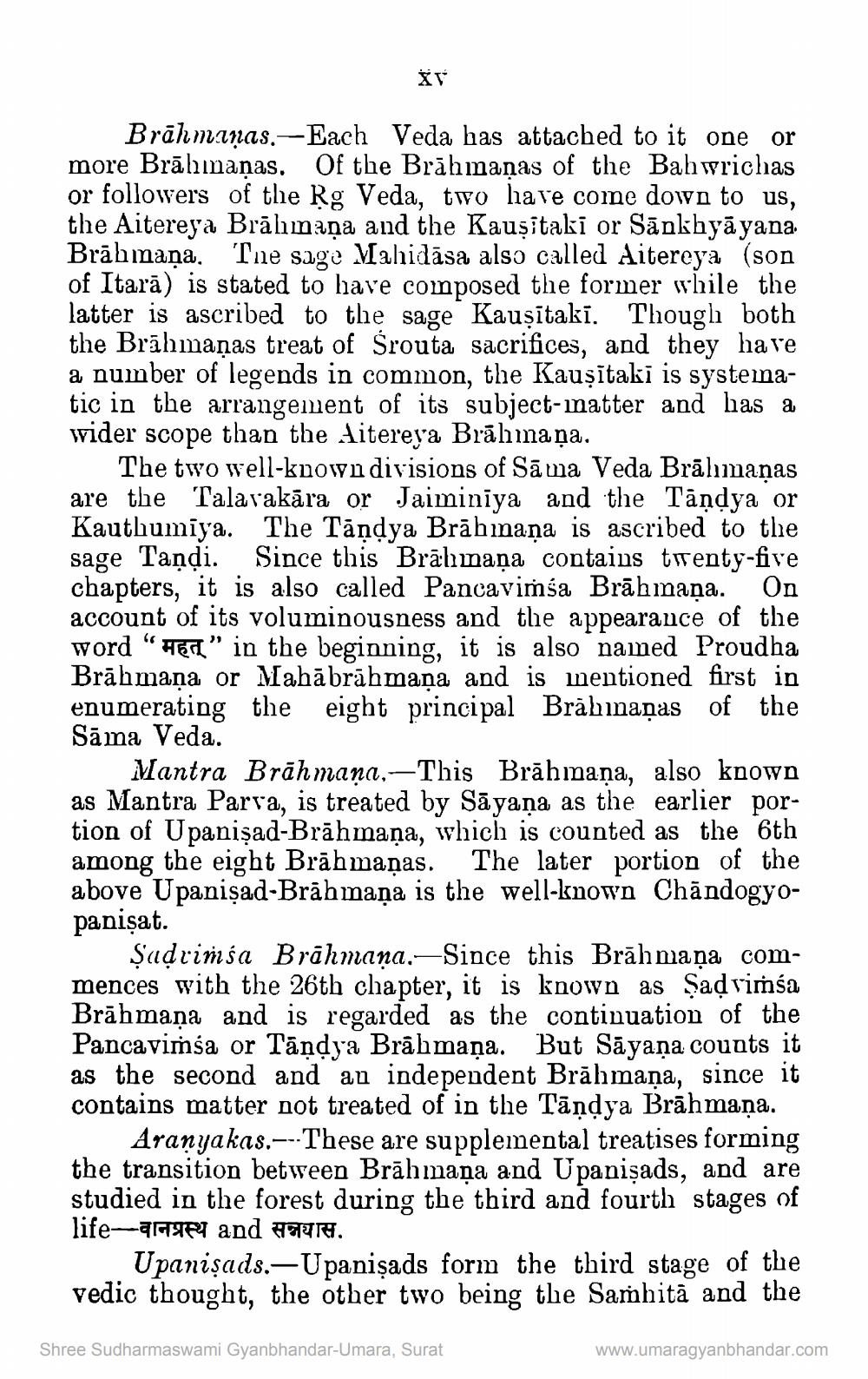________________
Brāhmanas.-Each Veda bas attached to it one or more Brāhmaṇas. Of the Brāhmaṇas of the Bahwrichas or followers of the Rg Veda, two have come down to us, the Aitereya Brālınana and the Kausitaki or Sankhyāyana. Brāhmaṇa. The sage Mahidāsa also called Aitereya (son of Itarā) is stated to have composed the former while the latter is ascribed to the sage Kausitakī. Though both the Brāhmaṇas treat of Srouta sacrifices, and they have a number of legends in common, the Kausitaki is systematic in the arrangement of its subject-inatter and has a wider scope than the litereya Brāhmaṇa.
The two well-known divisions of Sāma Veda Brālimaņas are the Talavakāra or Jaiminiya and the Tāņdya or Kauthumīya. The Tāndya Brāhinana is ascribed to the sage Taņdi. Since this Brālimaņa contains twenty-five chapters, it is also called Pancavimśa Brāhmaṇa. On account of its voluminousness and the appearance of the word " HECT” in the beginning, it is also named Proudha Brāhmaṇa or Mahābrāhmaṇa and is mentioned first in enumerating the eight principal Brāhinaņas of the Sāma Veda.
Mantra Brāhmaṇa, — This Brāhmaṇa, also known as Mantra Parra, is treated by Sāyaṇa as the earlier portion of Upanişad-Brāhmaṇa, which is counted as the 6th among the eight Brāhmaṇas. The later portion of the above Upanişad-Brāhmaṇa is the well-known Chándogyopanişat.
Şudriñśa Brāhmaṇa.Since this Brāhmaṇa commences with the 26th chapter, it is known as Şad rimba Brāhmaṇa and is regarded as the continuation of the Pancavimśa or Tāndya Brāhmana. But Sāyana counts it as the second and an independent Brāhmaṇa, since it contains matter not treated of in the Tāndya Brāhmaṇa.
Aranyakas.---These are supplemental treatises forming the transition between Brāhmaṇa and Upanişads, and are studied in the forest during the third and fourth stages of life-anger and ETH.
Upanişads.—Upanişads form the third stage of the vedic thought, the other two being the Samhitā and the
Shree Sudharmaswami Gyanbhandar-Umara, Surat
www.umaragyanbhandar.com




